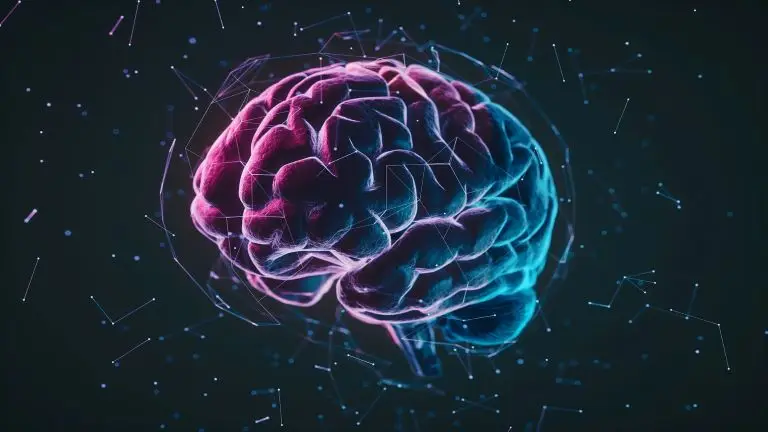Breath, Brain, and Balance: The Neuroscience Behind Transformational Breathwork
What if one of the most powerful tools to shift your brain, balance your mood, and transform your life was already in your body—and free? Breathwork has gained huge popularity in recent years, from yoga studios to therapy rooms to corporate wellness programmes.
But beneath the buzzwords lies something truly fascinating: a growing body of neuroscience that confirms what ancient traditions have long known. Breath has the power to regulate your nervous system, improve mental clarity, and foster emotional resilience. In this post, we’ll explore the science behind transformational breathwork—and why your next breakthrough might just begin with your next breath.
The Forgotten Superpower of Conscious Breathing
Most of us breathe around 20,000 times a day without thinking. But when we start paying attention to the breath—when we consciously shape it—we tap into an extraordinary system of mind-body regulation. Breath is unique because it is both automatic and controllable. This means we can use it as a bridge between the unconscious processes of the body and the conscious power of the mind.
Modern neuroscience is now catching up with this ancient insight. When we breathe deeply and rhythmically, we activate the parasympathetic nervous system, reducing stress and improving emotional balance. When we shift our breath pattern intentionally, we can influence brainwave states, boost mental focus, and even access altered states of consciousness.
Breath and the Brain: What Neuroscience Reveals
So how exactly does breath affect the brain? Let’s begin with the basics. The brain relies on a constant supply of oxygen to function optimally. Shallow, erratic breathing can lead to a buildup of carbon dioxide and deprive the brain of the oxygen it needs, leading to foggy thinking, anxiety, and even depressive symptoms. On the flip side, slow and conscious breathing improves oxygenation and helps regulate brain activity.
But it goes deeper than that. Studies show that different breathing techniques stimulate specific areas of the brain. For instance, slow nasal breathing activates the prefrontal cortex—the part of the brain responsible for executive function, decision-making, and emotional regulation. Fast or conscious connected breathing, on the other hand, can influence the limbic system, particularly the amygdala and hippocampus, which play key roles in processing emotions and memory.
This suggests that transformational breathwork doesn’t just help you relax—it can rewire emotional patterns at the level of the brain.
The Autonomic Nervous System and Breathwork
One of the biggest benefits of breathwork lies in its influence over the autonomic nervous system (ANS), which controls bodily functions like heart rate, digestion, and respiration. The ANS has two main branches: the sympathetic (fight-or-flight) and the parasympathetic (rest-and-digest).
Most people spend too much time in a state of low-level sympathetic activation, constantly battling deadlines, blue light, and background stress. This chronic tension can lead to sleep disturbances, hormonal imbalances, and mental health issues. Breathwork acts like a manual override.
When we extend the exhale or practise techniques like coherent breathing (inhaling and exhaling for the same count), we stimulate the vagus nerve and shift the body into parasympathetic dominance. This brings about a state of calm, clarity, and connection. In fact, vagal tone—the health of your vagus nerve—has been directly linked with resilience to stress, improved mood, and better digestion. And breathwork is one of the most effective ways to improve it.
Begin your sacred inner journey: Get your free 7-Day Sacred Stillness Challenge and start today
Brainwave States and Altered Consciousness
Beyond basic relaxation, transformational breathwork has the power to shift brainwave states. Our brains operate in different frequencies depending on our state of consciousness: Beta for focused thinking, Alpha for calm alertness, Theta for deep meditation, and Delta for deep sleep. Breathwork can guide the brain from a Beta-dominant state into Alpha and Theta, where intuition, insight, and healing often arise. In some breathwork practices—such as holotropic or conscious connected breathing—people report visionary experiences, emotional breakthroughs, and a deep sense of unity.
These shifts correlate with increased Theta and Gamma activity in the brain, and sometimes mirror the brain states associated with psychedelic experiences. While the science is still emerging, early research suggests that these non-ordinary states are not just “feel-good” moments. They may actually help the brain form new neural connections, process unresolved trauma, and support long-term behavioural change.
Breathwork and Mental Health
The mental health implications of breathwork are profound. Clinical studies have shown that breath-based interventions can reduce symptoms of anxiety, depression, and PTSD. In one study, participants who practised Sudarshan Kriya—a structured breathing sequence—experienced significant improvement in mood and stress levels, on par with antidepressants. Another study at Stanford found that just five minutes of daily breathwork could lower anxiety more effectively than mindfulness meditation.
Breathwork is also being used as an adjunct to psychotherapy, helping clients access emotions stored in the body and integrate experiences at a somatic level. The beauty of breathwork is that it empowers the individual. It doesn’t require expensive equipment or long sessions. Just five to ten minutes of daily practice can begin to shift your baseline.
How to Start Your Own Breathwork Practice
If you’re new to breathwork, start simple. One of the most accessible techniques is box breathing: inhale for four counts, hold for four, exhale for four, and hold again for four. This calms the nervous system and improves focus. Another favourite is 4-7-8 breathing: inhale for 4, hold for 7, exhale for 8—a powerful way to reduce anxiety and prepare for sleep.
For a more energising experience, you might explore rhythmic or conscious connected breathing, preferably with a trained facilitator or online course. Whatever style you choose, consistency is key. Like physical fitness, breathwork works best when it’s part of your daily routine. Morning sessions can set the tone for the day; evening sessions can help you unwind and process emotions.
The Future of Breathwork: From Ancient Wisdom to Modern Science
We’re living in an era where ancient practices are being validated by modern research. What yogis, monks, and mystics have known for millennia—that breath shapes consciousness—is now being measured in brain scans, HRV monitors, and clinical studies. As more people turn to holistic tools for healing and growth, breathwork offers a unique blend of accessibility, efficacy, and depth.
Whether you’re looking to reduce stress, sharpen your mind, or explore the edges of human experience, the breath is your gateway. You don’t need to believe in anything mystical. The science speaks for itself. All you need to do is breathe—with awareness, with intention, and with curiosity.
Bonus Resources
Why not treat yourself to a Meditation Retreat in the beautiful Devon Countryside?
This post may also interest you: Breathwork for Creativity: Unlocking Inspiration Through Conscious Breathing
Best Wishes,
David.
© D. R. Durham, All rights reserved, 2025.




